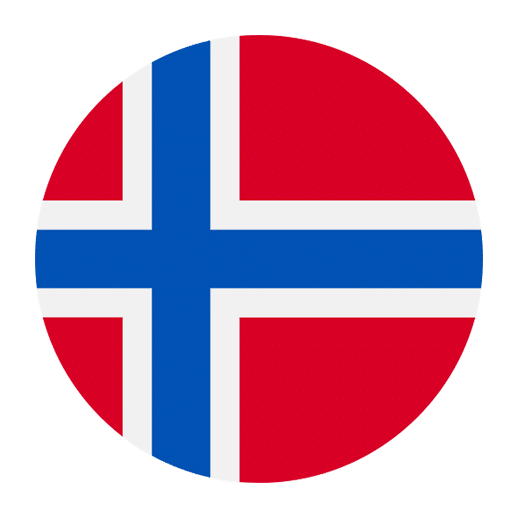Learning a new language can be a rewarding experience, providing not only the ability to communicate in a different tongue but also insight into another culture. When it comes to Norwegian, a language rich in history and spoken by over 5 million people, one of the most practical areas of vocabulary to master is related to health and wellness. Whether you’re planning to travel to Norway, live there, or simply expand your linguistic repertoire, understanding the key terms associated with health and wellness can be incredibly useful.
Basic Vocabulary for Health and Wellness
Let’s start with some basic terms that you’ll likely encounter in medical settings or everyday conversations about health. Here are some fundamental words and phrases:
– **Health** – Helse
– **Wellness** – Velvære
– **Doctor** – Lege
– **Nurse** – Sykepleier
– **Patient** – Pasient
– **Hospital** – Sykehus
– **Clinic** – Klinikk
– **Pharmacy** – Apotek
– **Medicine** – Medisin
– **Prescription** – Resept
These basic terms are your building blocks and will help you navigate more complex conversations and scenarios.
Common Symptoms and Conditions
Understanding how to describe symptoms and recognize common conditions is crucial. Here are some words and phrases to help you communicate effectively about your health:
– **Fever** – Feber
– **Cold** – Forkjølelse
– **Flu** – Influensa
– **Headache** – Hodepine
– **Stomachache** – Magepine
– **Cough** – Hoste
– **Sore throat** – Sår hals
– **Dizziness** – Svimmelhet
– **Pain** – Smerte
– **Allergy** – Allergi
For example, if you need to say “I have a headache,” you would say “Jeg har hodepine.” If you’re feeling dizzy, you could say “Jeg er svimmel.”
Body Parts and Anatomy
Knowing the names of different body parts can be extremely useful, especially when describing symptoms or discussing medical issues. Here are some essential terms:
– **Head** – Hode
– **Eye** – Øye
– **Ear** – Øre
– **Nose** – Nese
– **Mouth** – Munn
– **Arm** – Arm
– **Hand** – Hånd
– **Leg** – Bein
– **Foot** – Fot
– **Heart** – Hjerte
– **Lung** – Lunge
– **Stomach** – Mage
Understanding these terms can help you describe where you are experiencing discomfort or pain. For instance, “My leg hurts” would be “Beinet mitt gjør vondt.”
Medical Procedures and Treatments
It’s also useful to know some common medical procedures and treatments. Here are some key terms:
– **Examination** – Undersøkelse
– **Surgery** – Kirurgi
– **Injection** – Injeksjon
– **Vaccination** – Vaksinasjon
– **X-ray** – Røntgen
– **Blood test** – Blodprøve
– **Bandage** – Bandasje
– **Cast** – Gips
– **Therapy** – Terapi
– **Physical therapy** – Fysioterapi
For example, if you need an X-ray, you would say “Jeg trenger en røntgen.”
Describing Your Health
When talking about your health, it’s important to know how to describe your current state, any ongoing conditions, and how you are feeling. Here are some useful phrases:
– **I feel sick** – Jeg føler meg syk
– **I am in pain** – Jeg har smerter
– **I have been feeling unwell** – Jeg har følt meg dårlig
– **I am allergic to…** – Jeg er allergisk mot…
– **I need to see a doctor** – Jeg trenger å se en lege
– **I have a chronic condition** – Jeg har en kronisk tilstand
These phrases will help you communicate your needs effectively, whether you’re speaking to a healthcare professional or discussing your health with friends and family.
Emergency Situations
In case of emergencies, knowing the right vocabulary can be lifesaving. Here are some essential terms and phrases:
– **Emergency** – Nødsituasjon
– **Ambulance** – Ambulanse
– **Help!** – Hjelp!
– **Call an ambulance!** – Ring etter ambulanse!
– **I need help** – Jeg trenger hjelp
– **I am having a heart attack** – Jeg har hjerteinfarkt
– **I can’t breathe** – Jeg kan ikke puste
These phrases are critical for communicating effectively in urgent situations.
Health and Wellness Lifestyle
Beyond the medical aspects, talking about health and wellness also involves discussing lifestyle choices and activities that contribute to overall well-being. Here are some key terms:
– **Exercise** – Trening
– **Diet** – Kosthold
– **Healthy** – Sunn
– **Unhealthy** – Usunn
– **Sleep** – Søvn
– **Stress** – Stress
– **Relaxation** – Avslapning
– **Meditation** – Meditasjon
– **Yoga** – Yoga
– **Hiking** – Fottur
For example, if you want to say “I practice yoga,” you would say “Jeg driver med yoga.”
Nutrition and Food
Nutrition plays a significant role in health and wellness. Here are some terms related to food and diet:
– **Vegetables** – Grønnsaker
– **Fruits** – Frukt
– **Meat** – Kjøtt
– **Fish** – Fisk
– **Grains** – Korn
– **Dairy** – Meieriprodukter
– **Vitamins** – Vitaminer
– **Protein** – Protein
– **Carbohydrates** – Karbohydrater
– **Fat** – Fett
For instance, a balanced diet would be “et balansert kosthold.”
Mental Health
Mental health is an integral part of overall well-being. Here are some terms to help you discuss mental health:
– **Mental health** – Mental helse
– **Depression** – Depresjon
– **Anxiety** – Angst
– **Stress** – Stress
– **Therapist** – Terapeut
– **Counseling** – Rådgivning
– **Support group** – Støttegruppe
– **Mindfulness** – Oppmerksomt nærvær
For example, if you are experiencing anxiety, you could say “Jeg har angst.”
Health and Wellness Resources
Norway has a robust healthcare system, and it’s useful to know some of the resources available to you. Here are a few terms related to health services:
– **Health insurance** – Helseforsikring
– **Emergency room** – Akuttmottak
– **Family doctor** – Fastlege
– **Specialist** – Spesialist
– **Healthcare system** – Helsevesen
– **Medical record** – Journal
– **Appointment** – Avtale
For example, to book an appointment with a specialist, you would say “Jeg vil bestille en avtale med en spesialist.”
Conclusion
Mastering the vocabulary related to health and wellness in Norwegian can significantly enhance your ability to take care of your health and well-being, whether you are in Norway or communicating with Norwegian speakers. This comprehensive guide provides a foundation that you can build upon as you continue to learn and practice the language. Remember, the key to language learning is consistent practice and real-life application. So, don’t hesitate to use these terms in your daily conversations and consult additional resources to expand your knowledge further. Lykke til! (Good luck!)

